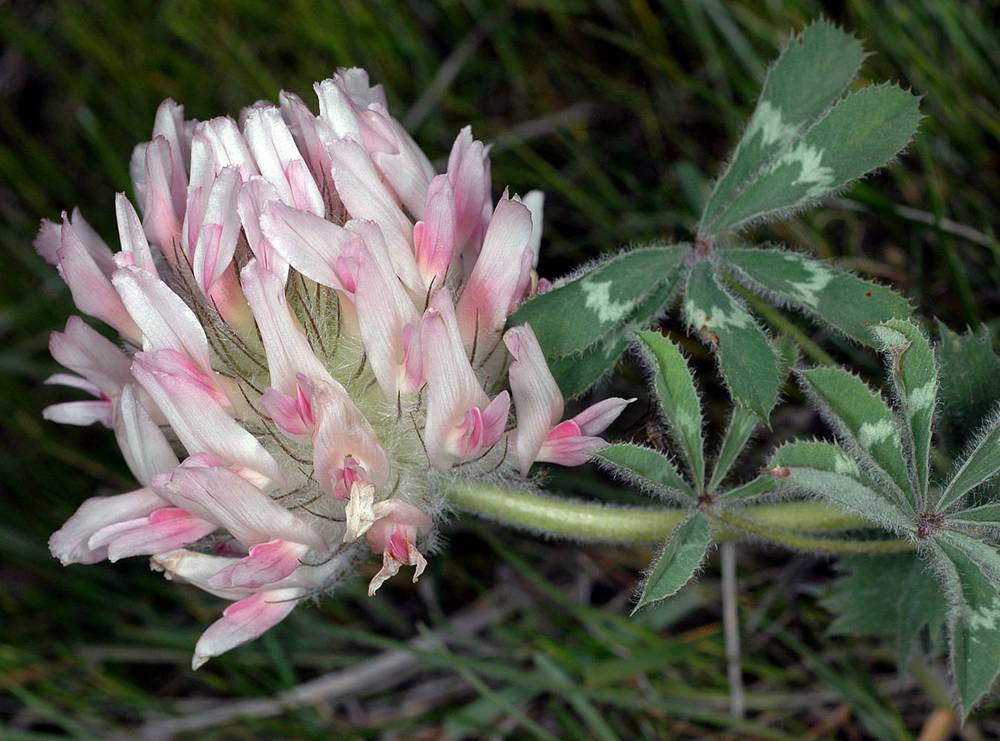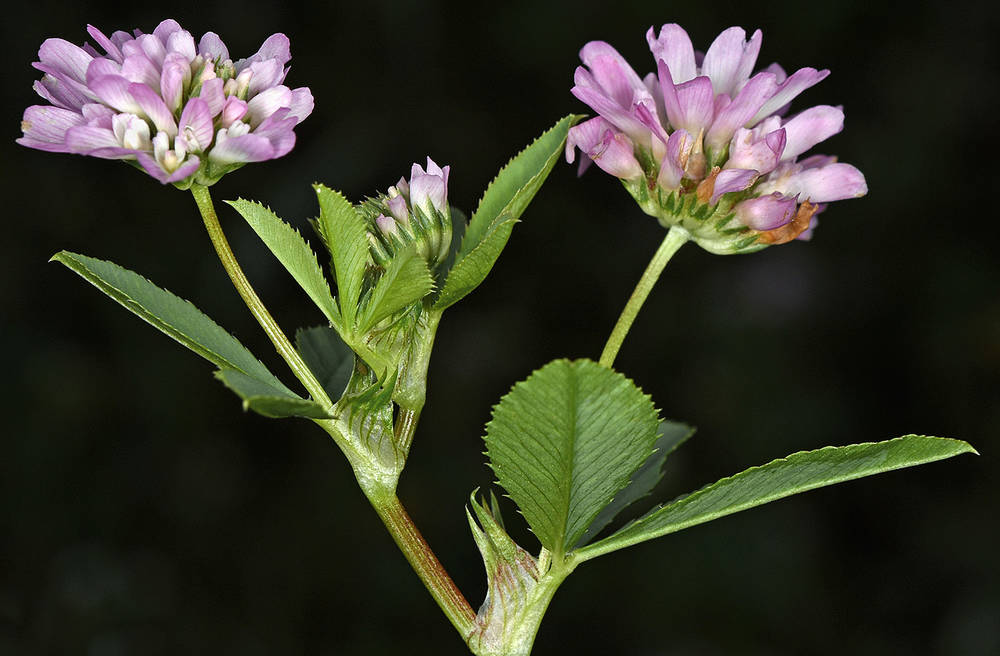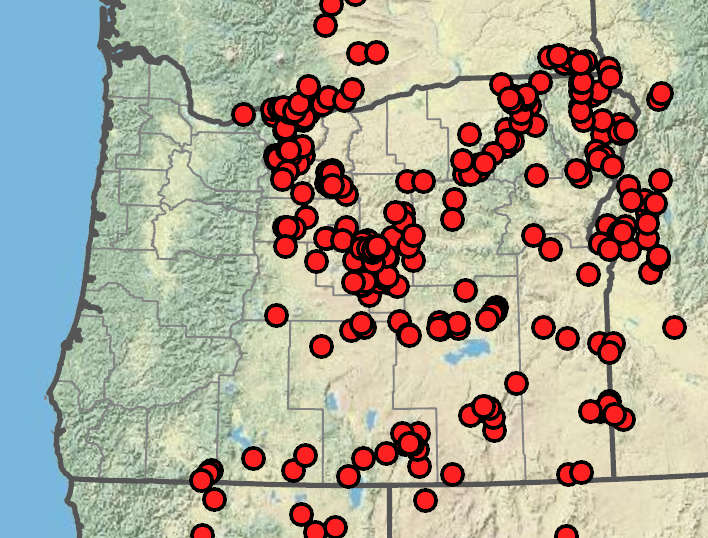Trifolium macrocephalum
Trifolium resupinatum
big-headed clover, largehead clover
Persian clover, reversed clover
palmate;
leaflets (5)7–9, broadly to narrowly obovate, often folded, 10–27 × 4–11 mm, bases cuneate;
margins serrulate or irregularly lobed;
veins thickened, especially distally;
tips rounded or truncate, apiculate;
surfaces abaxially villous, adaxially sparsely villous to glabrate;
petioles 10–140 mm;
petiolules 0.9–1.2 mm;
stipules ovate, obovate, or oblong, 10–30 mm;
margins entire.
pinnate;
leaflets 3, obovate; ovate, elliptic, or rhombic, 10–30 × 5–30 mm, bases cuneate;
margins spinulose-dentate;
veins moderately prominent;
tips rounded or broadly acute;
surfaces abaxially hairy, adaxially glabrous;
petioles 5–200 mm;
petiolules ? 1 mm;
stipules lanceolate or ovate, 5–18 mm;
margins entire;
tips acuminate-filiform.
terminal, 20–32-flowered, globose or ovoid-ellipsoidal, 25–80 × 30–70 mm;
involucres absent;
bracteoles broadly ovate, membranous; ? 0.5 mm, truncate.
axillary, 15–30-flowered, subglobose becoming globose, forming stellate-spreading clusters of calyces in fruit, 5–16 × 8–15 mm, inconspicuously involucrate by a narrow rim; rim ~0.2 mm;
bracteoles minute or absent.
20–80 mm.
10–60 mm.
erect, 1–1.5 mm.
slightly reflexed; ? 0.5 mm.
20–30 mm;
calyces campanulate, 10–22 mm, villous;
veins 10–15;
tubes 2.5–4 mm;
lobes subulate, subequal, 2–4 × tube length, plumose;
orifices open;
corollas 20–28 mm, white; creamy white, or pinkish;
banners ovate or oblong, 20–28 × 10–13 mm;
tips rounded or slightly emarginate;
keel petals deep pink.
resupinate, 5–6 mm;
calyces tubular-campanulate, inflated in fruit, markedly asymmetric-bilabiate; slit between adaxial lobes, 2.5–3 mm, becoming 8–11 mm in fruit; hairy; short-hairy, or glabrescent in fruit;
veins 10, connected by lateral veins;
tubes 2 mm, becoming 7–9 mm in fruit;
lobes erect, triangular, becoming divergent and linear-lanceolate, unequal, green;
orifices open;
corollas 5–8 mm, pink to purple;
banners oblong, 5–8 × 2 mm;
tips emarginate to crenulate.
longitudinally dehiscent; ovoid, 4–5 mm; ? calyces.
lenticular, 1.8–2.2 mm; < calyces.
1–2; mitten-shaped to ellipsoid, 2.5–3 mm, yellow or reddish; smooth.
1; ovoid, 1.5–1.9 mm, dark purple; olive-green, yellow, or reddish brown; smooth; dull.
=32, 48.
=14, 16, 32.
Trifolium macrocephalum
Trifolium resupinatum
Rocky places, hard, compacted clay gumbo, lava beds, sage-covered slopes. Flowering Apr–Jul. 0–2200 m. BR, BW, Col, ECas, Lava, Owy. CA, ID, NV, WA. Native.
Trifolium macrocephalum has the largest inflorescences of any species in the genus. The name T. megacephalum is an illegitimate replacement name for Lupinaster macrocephalum.
Wet meadows, lawns, roadsides, fields, waste places. Flowering Jun–Jul. 50–200 m. WV. CA, WA; eastern and midwestern North America; worldwide. Exotic.
Trifolium resupinatum is native to Eurasia and northern Africa and has become weedy throughout the world. Widespread use of T. resupinatum as a forage crop in the United States began in the late 1920s.
Michael Vincent
Michael Vincent
- Local floras:
BC,
CA,
OR,
WA
- Local Web sites:
CalFlora,
CalPhotos,
Flora NW,
PNW Herbaria
WildflowerSearch
iNaturalist (observations)
USDA Plants Database
- LBJ Wildflower Center
- SEINet
- Plants of the World Online
- Encyclopedia of Life
- Wikipedia
- Google Image Search





